Cooking with induction
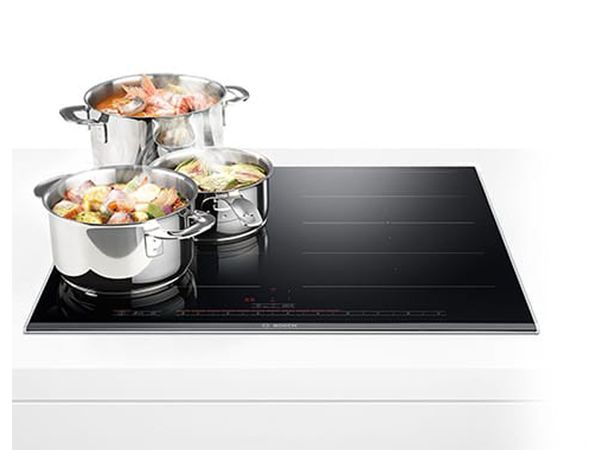
Cooking with induction is not just quick, safe and clean. But also tasty.
Cooking with induction is safer than all other alternatives. As only the base of the pan is heated and not the entire hob, you can’t burn your hand on the hob as it stays almost completely cold. And then there is the child safety feature: the built-in lock function means that you can lock the surface of your hob and prevent it from being used accidentally, giving you the highest level of safety.
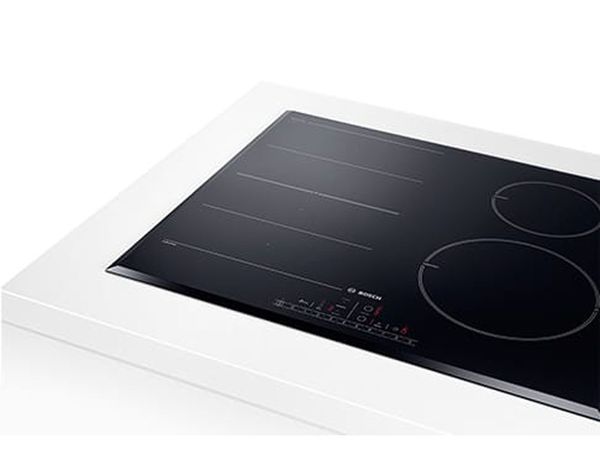
Answers to the most important questions about induction fields.
Expand the sections below to discover more information about cooking with induction.
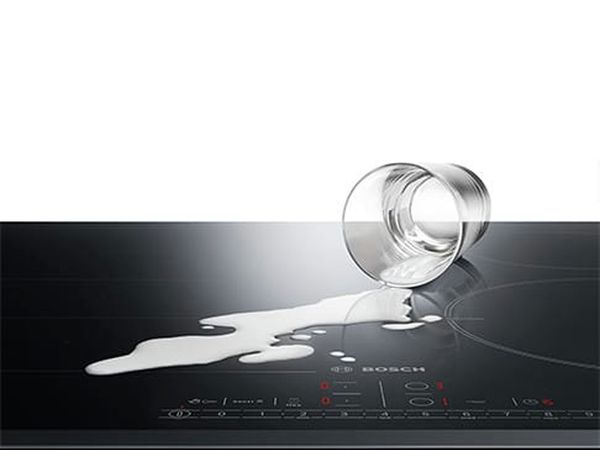
Hobs with induction make cooking quicker, safer and cleaner. You can control induction as precisely as you can gas – and it reacts as fast: the desired heat level is immediately achieved and cools immediately when the hob is turned off. As the glass ceramic surface is only heated by the heat of the cookware itself, there is no longer any danger of being burnt. There is also no longer any burnt on residue on the glass ceramic surface from pots that boil over: to clean, simply wipe the surface.
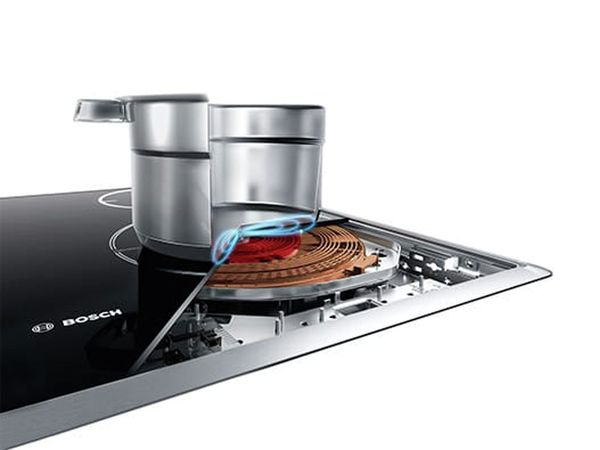
An induction hob has a surface made from glass ceramic on which a cooking pot is placed. Underneath the hob are induction coils made from copper wire that create a magnetic field as soon as a cooking zone is supplied with electricity. If a pan with a magnetised base is placed on the cooking surface, its base will be heated directly. The glass ceramic surface is only heated by the heat given off by the cookware and only where the pan comes into contact with the induction hob. If no pan with a magnetised base is placed on the induction hob, the hob will remain cold. An induction hob is not only safe, but also heats up quickly and is easy to use.
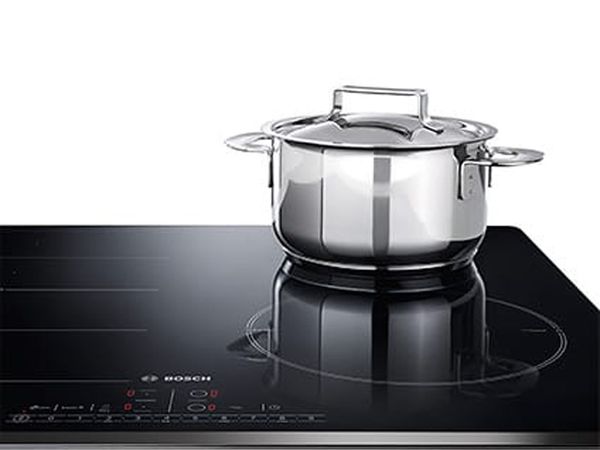
For cooking on an induction hob, you need to use cookware such as pots, pans or tins that have a magnetised base. This means that if you hold a magnet to it, it should stick. Good cookware is normally made with induction-suitable bases. The coil symbol on the base and the packaging of the cookware indicates that it is suitable for induction hobs.
In general:
- To cook on an induction cooker or hob, you need cookware made from stainless steel with a magnetised base, enamelled steel or cast iron, as well as special cookware.
- Not suitable for induction hobs is cookware made from aluminium, copper, glass/ceramic, crockery and stainless steel with a non-magnetised base.

Yes, cooking is much quicker with induction hobs than other types of hobs as the heat is available immediately. Induction can also be controlled very precisely and reacts particularly quickly. This saves up to 20% energy. A two-litre pan of water – depending on the type of appliance – is ready to use for cooking within minutes. You can cook and simmer dishes even more quickly by activating the ‘boost function’. The heat on the induction hob can reduced just as quickly when needed.
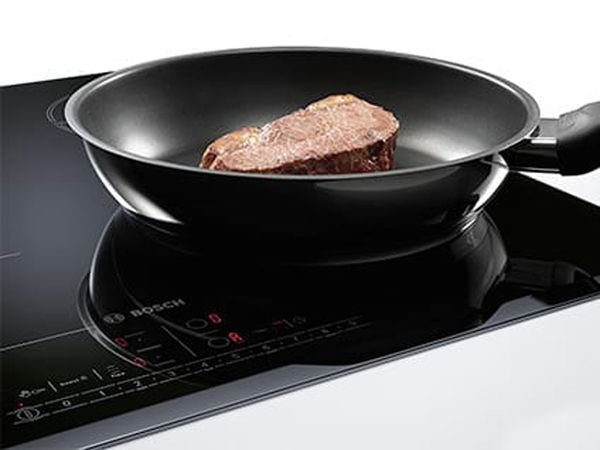
Cooking and roasting on induction hobs is much quicker than with traditional hobs. Oil, for example, or roasting fat, heats up particularly quickly. It is therefore recommended to prepare all the ingredients for the dish in advance before starting to cook it. Cookware should not be heated up when empty – it can overheat and become discoloured.

To cool the electronic components underneath the glass ceramic, a fan is set in motion that can automatically turn itself on during cooking. It runs until the appliance is sufficiently cooled and then automatically turns itself off. Depending on the material and finish of the cookware, various other noises can be heard when the hob settings are on high, such as silent humming, whistling or chirping. If the heat is turned down during cooking, these noises can hardly be heard. At low settings, a quiet clicking can be heard that is caused by the electronic components.
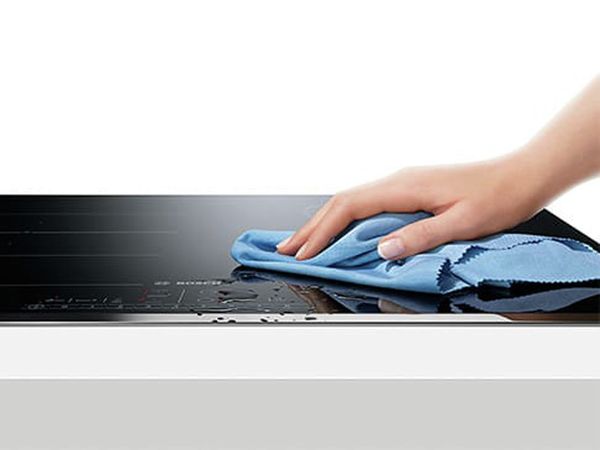
Induction hobs are particularly easy to clean as the glass ceramic surface only ever gets as hot as the pots and pans themselves. The induction hob also only heats the area where the cookware is placed. The rest of the hob remains cool: fat droplets or spilled food do not burn themselves onto the hob. A quick wipe with a damp cloth is normally enough to clean the hob immediately after cooking. You can also clean the hob occasionally with a glass ceramic cleaner. Always make sure the hob is cool before you start cleaning it.
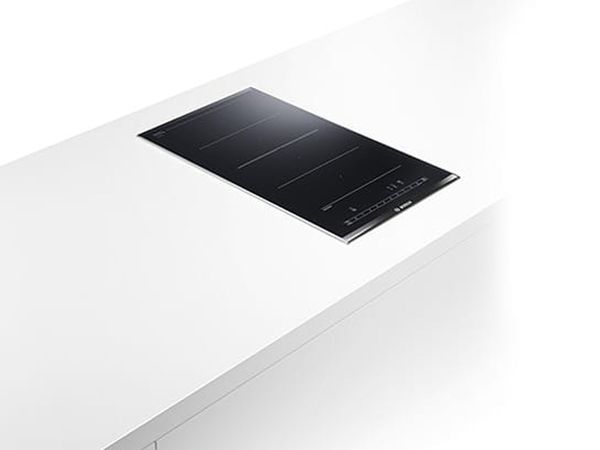
Electrical and magnetic fields are found on all devices driven by electricity, including hairdryers, electric razors, vacuum cleaners, washing machines or hobs. There are internationally recognised limits and standards that all manufacturers are required to adhere to in this respect. Bosch household appliances with induction are subject to regular checks and all our devices meet legal requirements. Bosch induction hobs are therefore safe when used correctly as described in the instructions and fall considerably below maximum EU limits.
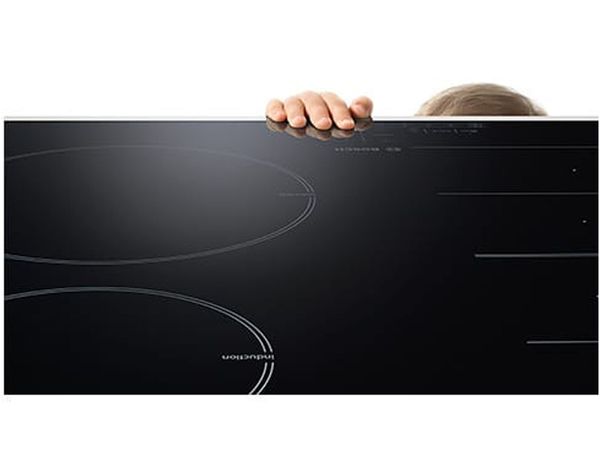
Yes, because Bosch adheres to internationally recognised limits and standards. Bosch household appliances with induction are subject to regular checks and all our products meet the legal requirements that have been adopted by groups including the World Health Organisation (WHO). These requirements specify the highest values at which the entire population and therefore also a pregnant woman and her unborn child will still be protected if they are adhered to. Also for the hands of children the maximum protection is assured. The integrated lock function can block the hob and avoid unmeant handling.

